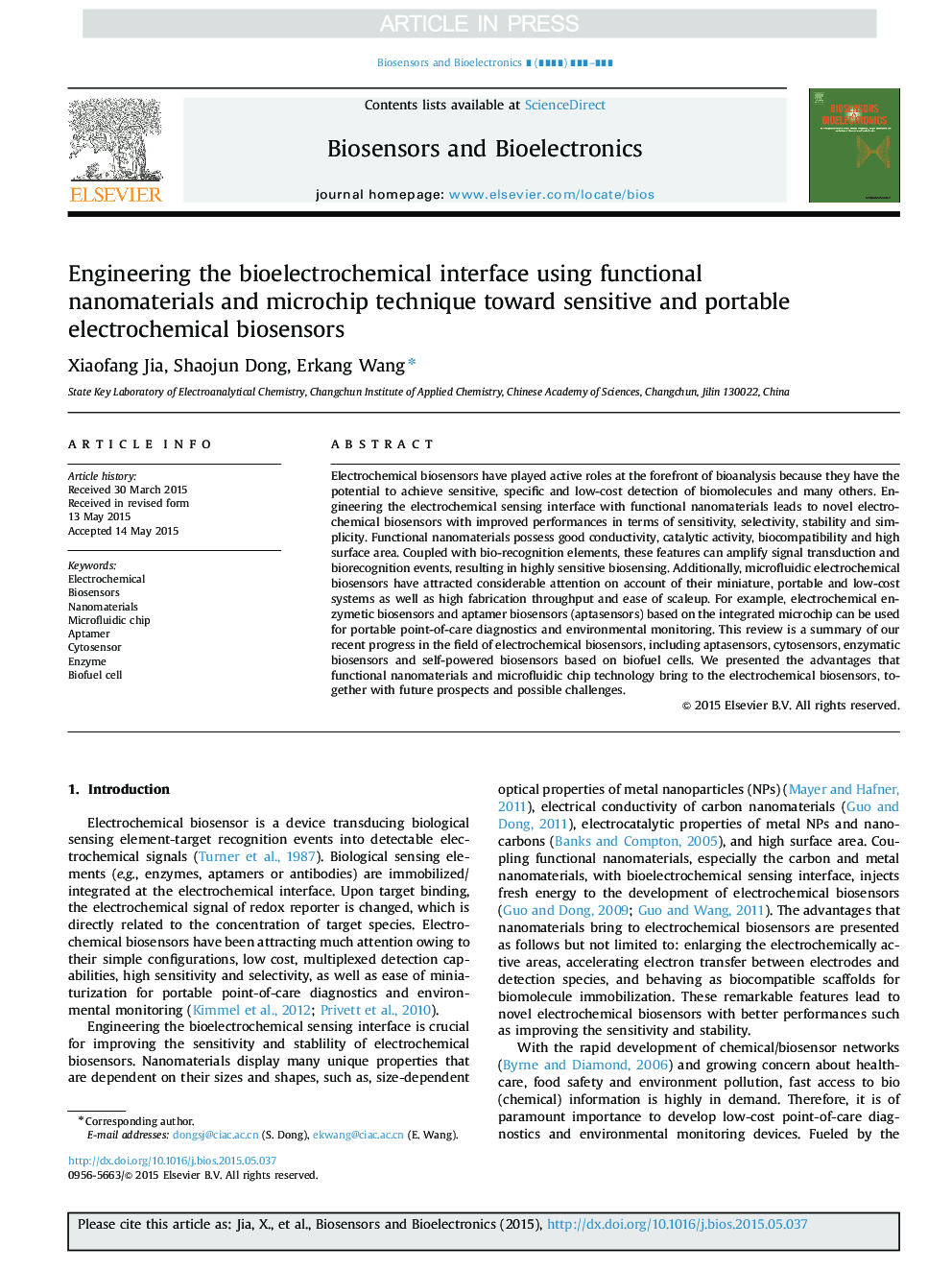| Article ID | Journal | Published Year | Pages | File Type |
|---|---|---|---|---|
| 7231219 | Biosensors and Bioelectronics | 2016 | 11 Pages |
Abstract
Electrochemical biosensors have played active roles at the forefront of bioanalysis because they have the potential to achieve sensitive, specific and low-cost detection of biomolecules and many others. Engineering the electrochemical sensing interface with functional nanomaterials leads to novel electrochemical biosensors with improved performances in terms of sensitivity, selectivity, stability and simplicity. Functional nanomaterials possess good conductivity, catalytic activity, biocompatibility and high surface area. Coupled with bio-recognition elements, these features can amplify signal transduction and biorecognition events, resulting in highly sensitive biosensing. Additionally, microfluidic electrochemical biosensors have attracted considerable attention on account of their miniature, portable and low-cost systems as well as high fabrication throughput and ease of scaleup. For example, electrochemical enzymetic biosensors and aptamer biosensors (aptasensors) based on the integrated microchip can be used for portable point-of-care diagnostics and environmental monitoring. This review is a summary of our recent progress in the field of electrochemical biosensors, including aptasensors, cytosensors, enzymatic biosensors and self-powered biosensors based on biofuel cells. We presented the advantages that functional nanomaterials and microfluidic chip technology bring to the electrochemical biosensors, together with future prospects and possible challenges.
Related Topics
Physical Sciences and Engineering
Chemistry
Analytical Chemistry
Authors
Xiaofang Jia, Shaojun Dong, Erkang Wang,
